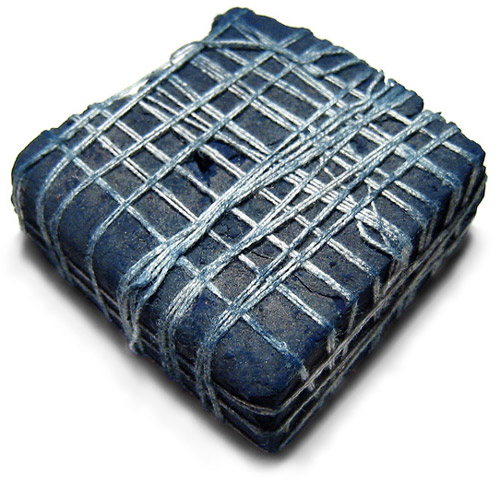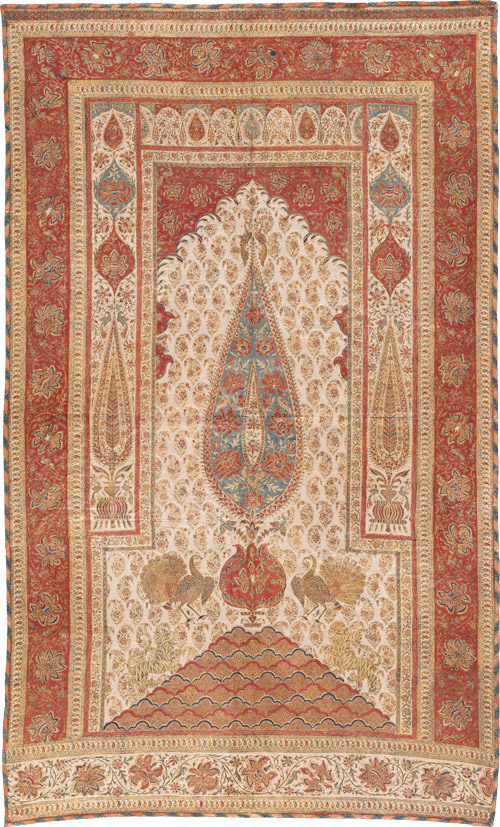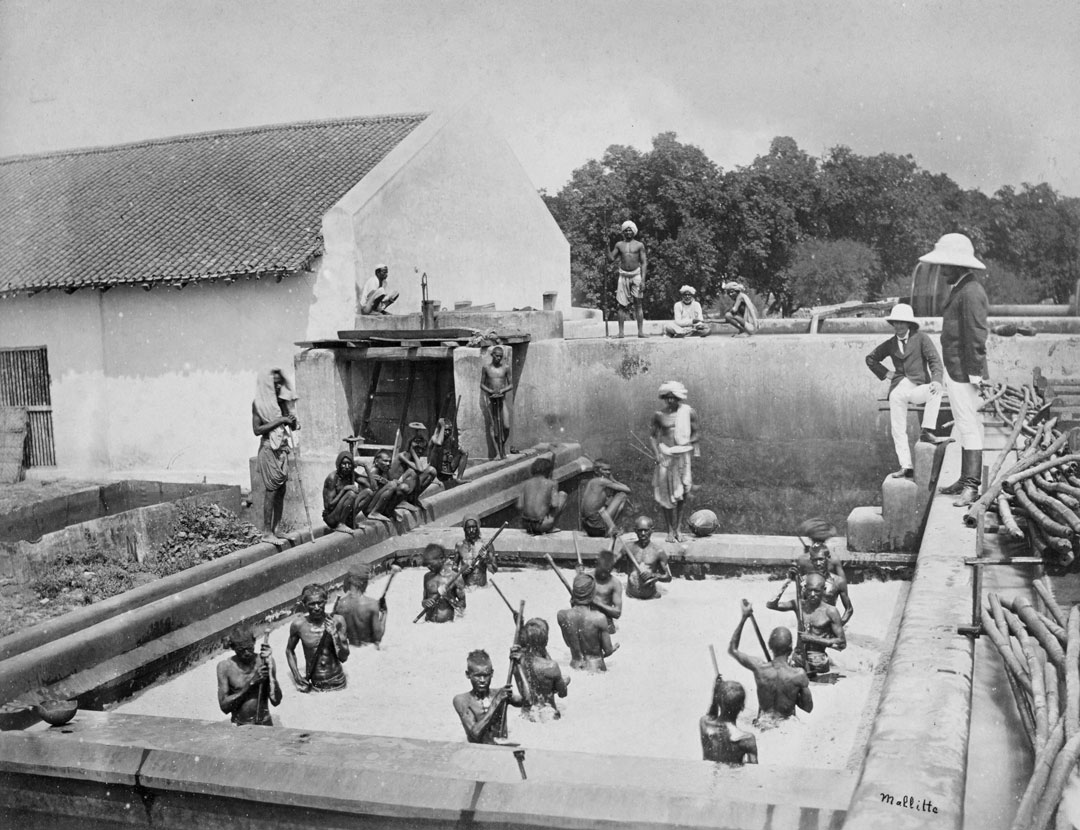

Indigo and India are closely aligned. In India, over 5,000 years ago, a shrub with tiny purple flowers was discovered to render a blue dye. Farmers of the Indus valley began trading this dye for gold and jade from Persia and Mesopotamia, and later Rome and Greece. Greeks named the blue cakes of indigo “indikon,” meaning from India, partly giving indigo its name.

For over a thousand years, indigo found its way slowly via overland routes. When trade by sea opened up around 1700, Europeans aimed for India as a source for indigo, and the world’s appetite for blue dye became insatiable. From 1600-1800, India supplied massive amounts of indigo (and became the largest exporter of textiles the world has ever known). Indigo was used to dye linens and clothing, such as this 19th-century curtain. By 1850, Bihar and Bengal were supplying 4/5ths of the world’s indigo. However, this success was not without a huge cost, as human exploitation was built into the plantation system.

As the plantations grew, so did resentments about the farmers’ working conditions. In the 19th century, British overseers kept the profits of the indigo trade and locked farmers into a system akin to slavery.

Indigo vats in India
Rebellion emerged again in the 20th century, and came to the attention of Mahatma Gandhi, who had just returned from South Africa. In 1917, he arrived in Bihar with a team of lawyers, began to assist the farmers, and proposed satyagraha—non-violent civil disobedience. When he was arrested, Gandhi remained respectful, but defiant, and his case was withdrawn. He led protests and strikes, and eventually negotiated an improved agreement for indigo workers. This, his first act of civil disobedience in India, made him a national hero and leader of the peaceful protest that brought about the end of the British Empire 30 years later.